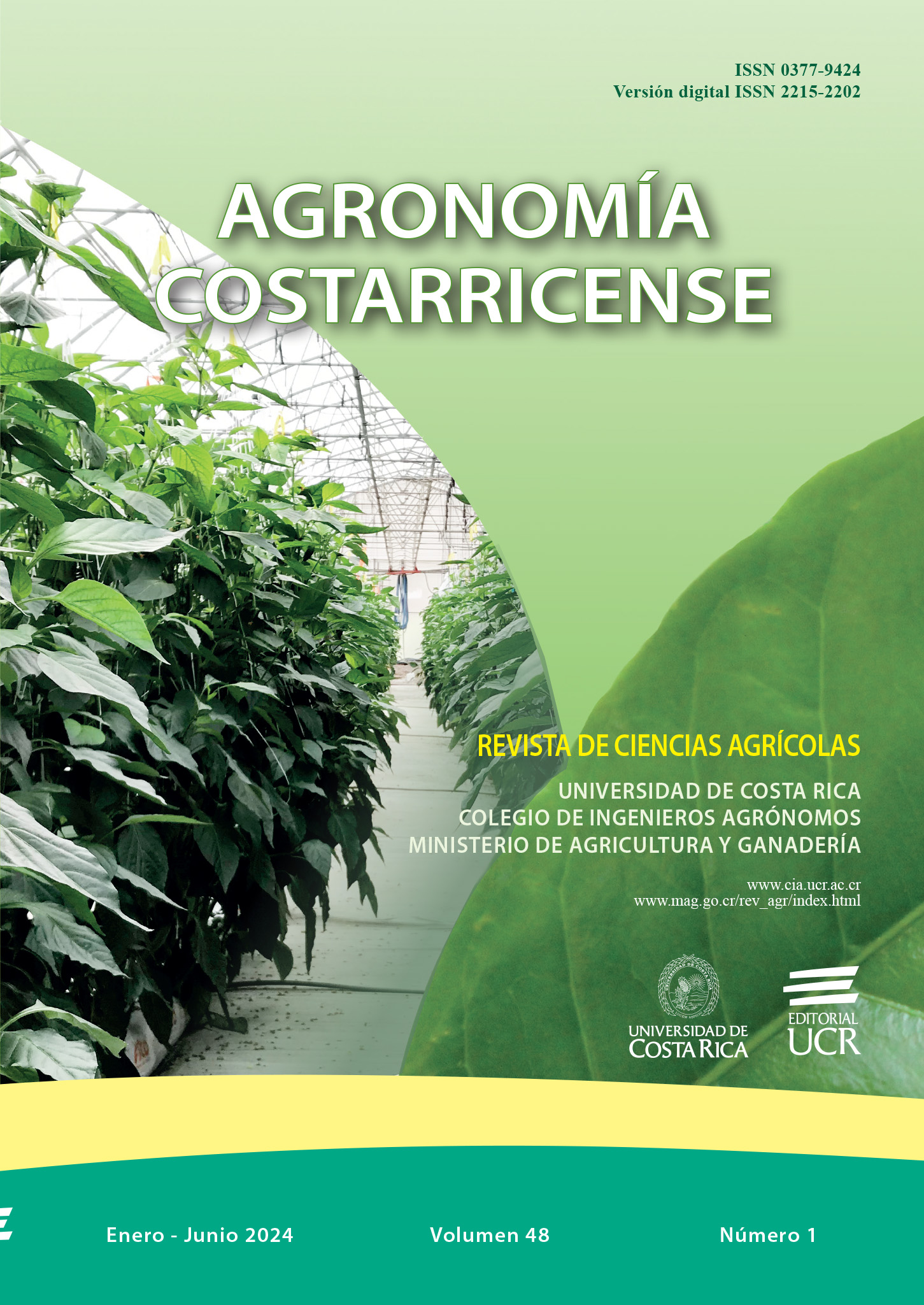Abstract
Introduction. Canavalia ensiformis, widely used as green manure, has proven benefits from mycorrhizal inoculation. The effectiveness of the arbuscular mycorrhizal inoculants used in Cuba depend on the edaphic condition in which the crop develops, however there are no experimental results on eutric chromic cambisol soils from Jibacoa. Objective. Evaluate in this soil the response of canavalia to the application of 3 mycorrhizal inoculants. Materials and methods. The research was carried out at the Jibacoa Agro-Forestry Experimental Station, Villa Clara province, Cuba. In a completely randomized design, 3 inoculants formulated with the strains INCAM-2/Funneliformis mosseae, INCAM-4/Glomus cubense and INCAM-11/ Rizhophagus irregularis and a control without inoculation were studied. At the time that the canavalia flowered, the following were evaluated: the number of effective nodules; the height; the dry mass of the root, stem, leaves, total and the efficiency index was determined. Results. Canavalia presented a positive and differentiated response to mycorrhizal inoculation. The inoculation with INCAM-2 significantly increased the number of effective nodules (21.9%) with values higher than the control treatment and the inoculation with INCAM-4, it also caused the greatest height with increases of 66.1%, higher (p<0.05) to those found with the other inoculants. INCAM-2 always caused higher values of dry mass (p<0.01) in any of the organs and total in relation to the control treatment, however, they did not differ (p<0.01) from those obtained with the other inoculants, which did not always differ from the control treatment. The response based on total dry mass was orderedas follows: INCAM-2 with 71.90% > INCAM-11 with 50.17% > INCAM-4 with 38.29%. Conclusions. Canavalia presented a positive response to mycorrhizal inoculation in the eutric chromic cambisol soil with increases in its nodulation, growth and dry mass production. The INCAM-2 inoculant was always the most effective.
##plugins.facebook.comentarios##

This work is licensed under a Creative Commons Attribution-NonCommercial-NoDerivatives 4.0 International License.
Copyright (c) 2024 Agronomía Costarricense


